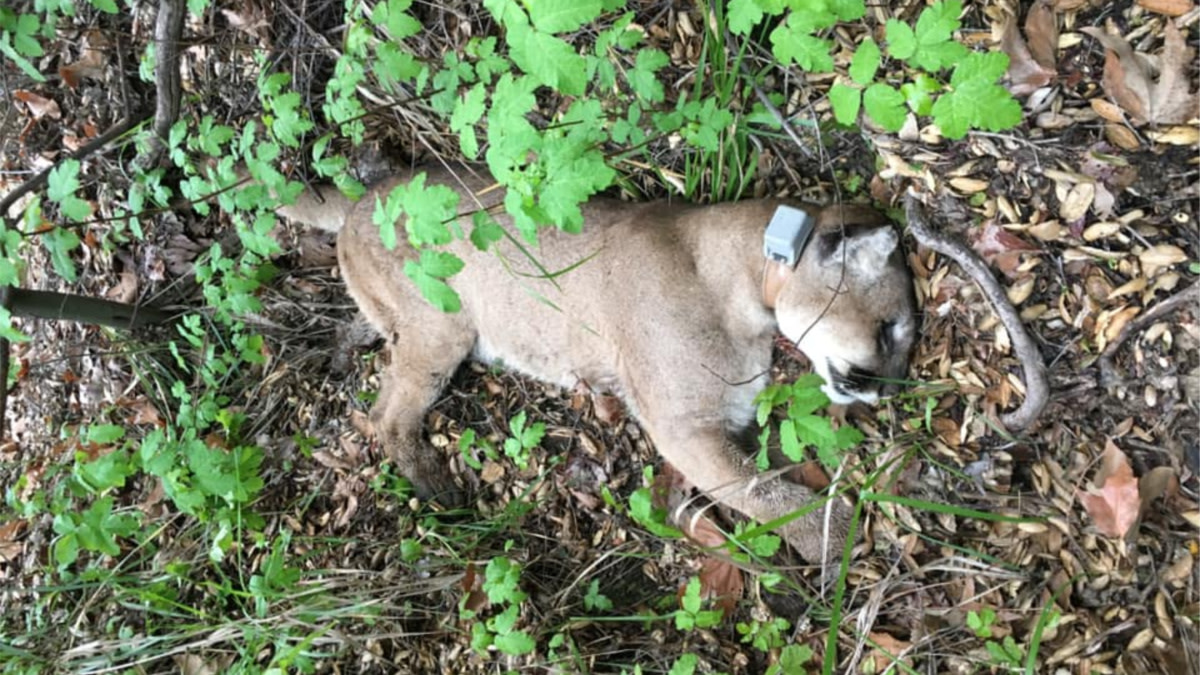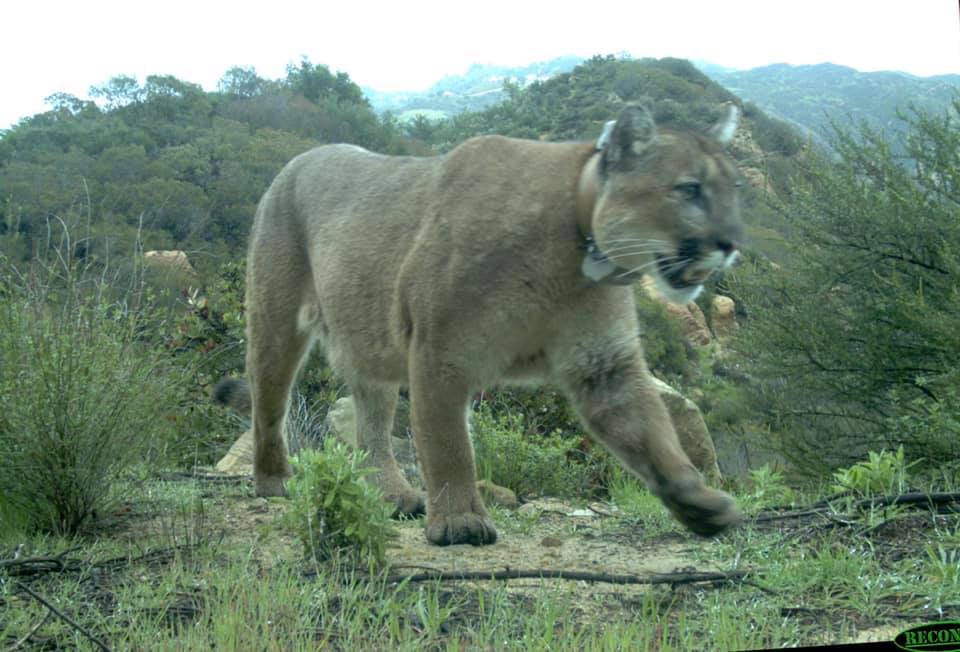
In Southern California, where mountain lions are listed as a “specially protected species,” the large cats face all sorts of threats. Urban sprawl and unnatural wildfires have destroyed habitat in recent decades, but now humans are also compromising the predator’s food.
The most recent example comes out of the Santa Monica Mountains, which sit about 30 miles up the coast from Beverly Hills. A National Park Service biologist discovered cougar P-47 dead with no noticeable wounds. A necropsy revealed the 3-year-old male died from internal hemorrhaging in the brain and lungs, a result of poisoning.
“It’s unfortunate to see an otherwise healthy mountain lion lost from what appears to be human causes,” Seth Riley, a wildlife ecologist for the Santa Monica Mountains National Recreation Area, told USA Today.
P-47 was “otherwise healthy,” indeed. The cat was one of the largest the NPS has collared, weighing 150 pounds. Biologists monitor the park’s cats through trail camera observations and had noted that the cougar showed no signs of being unwell.
“Visibly, he looked fine in the photos we were getting,” Kate Kuykendall, a spokeswoman for the National Park Service, told the Los Angeles Times. “Unless the animal develops mange, there’s really no way to know that a mountain lion is being poisoned until it’s too late.”
Researchers say the lion likely died because of secondary or tertiary poisoning. Secondary poisoning is where a non-target species eats a poisoned animal (lion eats a poisoned squirrel). Tertiary poisoning is where a non-target species eats a predatory animal that ate a poisoned animal (lion eats a bobcat that ate a poisoned squirrel).
Rodents that ingest rat poison don’t die immediately. Since the anticoagulants cause internal bleeding, it can take up to 10 days for a small mammal to pass. During that time period, rodents will be lethargic and confused, making them easy prey for bobcats, coyotes, hawks and owls.
“The source of the poisoning is from residents, businesses, pest control companies, restaurants, cemeteries, golf courses, etc.” said Jeffrey Sikich, a biologist for the Santa Monica Mountains National Recreation Area. “Anticoagulant rodenticides are commonly used to control many small mammal species, including rats, ground squirrels, gophers and rabbits, in both residential and commercial areas.”

A liver sample showed that P-47 had ingested six different anticoagulant compounds via rat poison. These results aren’t new to researchers. Recent studies in Southern California have revealed that 92% of bobcats, 83% of coyotes and 94% of mountain lions in the area have been exposed to anticoagulant poisons.
Similar to the rodents that start this process, large predators succumb to secondary or tertiary poisoning through a slow, painful death. Symptoms can include nosebleeds, bleeding gums, blood in stool, ruptured blood vessels, internal hemorrhaging and mange.
Mange is incredibly rare among wild cats across their range, but it’s becoming increasingly common in Southern California. Since 2002, of the 17 lions in the area that tested positive for rat poison compounds, five have had mange. Scientists haven’t been able to confirm it but suspect the two are linked.
“We’re not exactly sure yet,” Kuykendall said. “Our research hasn’t found a cause and effect, but we have found an association.”
In response to the poisoning problem, California’s state legislature introduced Assembly Bill 1788 earlier this year. The bill aims to restrict the use of anticoagulant rodenticides, except in cases where they are needed to protect public health, agricultural operations or food warehouses. Instead, those promoting the bill would like to see live traps and first-generation anticoagulants used in pest control situations.
Should Californians reject the bill and prioritize golf courses over mountain lions, the hypocrisy would be thick. Cougar protections have been in place for nearly three decades, and the state has one of the strongest populations in the country. The issue is so controversial that it cost the president of the California Fish and Game Commission his job in 2012 after photos surfaced of him with a lion taken on a legal hunt in Idaho. He was unanimously voted out of his position.
“We Californians might feel noble about our bans on hunting cougars and trapping bobcats,” Karin Klein wrote to the Sacramento Bee. “The Legislature is considering a bill to ban trophy hunting of bobcats as well. But that’s a little futile when we’re poisoning them for our own convenience.”
The bill is currently in the Senate, but it’s unclear if it will pass. Proponents call it “common sense legislation” and opponents think the potential law is an overreach. Representatives from the pest control industry have had a large presence at hearings regarding the bill, fearing a major blow to their business.
For a state that purports opposition to inhumane animal treatment, these protections for large cats seem obvious. “It’s folly to think that allowing animals to be poisoned into ill health and death is somehow more humane than hunting them,” Klein concluded.
Feature image via Santa Monica Mountains National Recreation Area.





